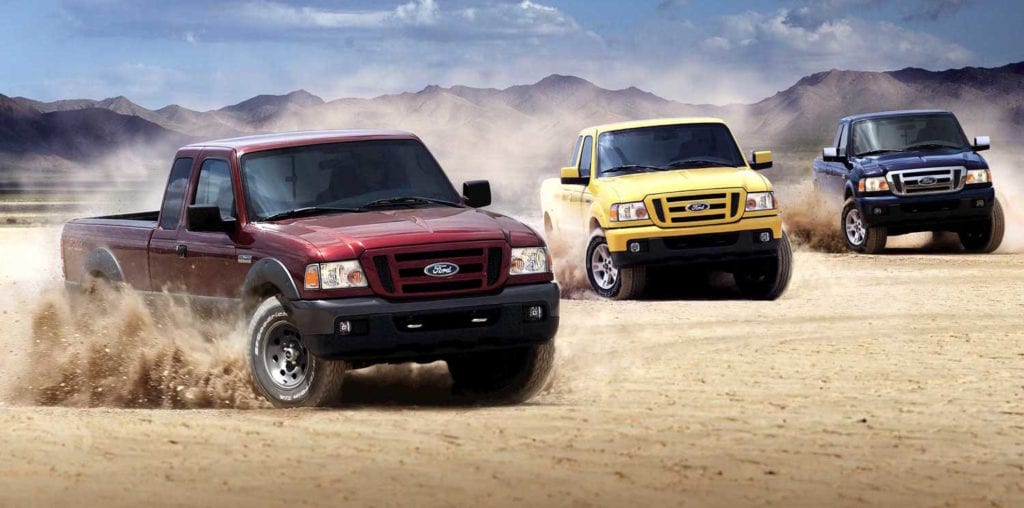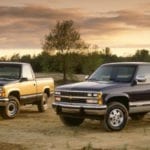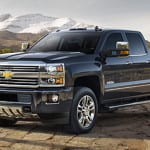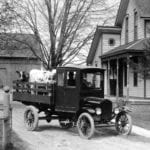When it comes to classifying the different types of trucks circulating through the used automotive market, it might seem confusing. But, it’s not as bad as you think. Why is this important? Well, for starters the different class/size/type (whatever you prefer to call it) of truck determines how much it can tow, the cargo volume, fuel-efficiency, and everything else that might be deemed significant when it comes to buying a used truck. When the government classifies trucks, they classify it via GVWR (Gross Vehicle Weight Rating), which is what determines how much they are allowed to haul or carry on the highway. Hence those weigh stations you see on the highway.
Typically, that’s reserved for larger commercial rigs. So for the sake of ease, when I say “type” of truck, I’m talking about the ones you see consumers driving most often: compact, mid-size, and full-size pickups.
Compact
Compact pickups are few and far between nowadays. They were introduced to North America around the 1960s by Japanese manufacturers. Primarily, it was Datsun and Toyota that built smaller pickups for the American market through the 1970s. A little later, Isuzu ended up building the Luv model for Chevrolet, Mazda built the Courier for Ford, and Mitsubishi built the Ram 50 for Dodge.
In the 1980s, the big three domestic companies (Chevy, Ford, and Dodge) produced their own compact trucks. While you can still find some of the ones Mazda and Isuzu made on the market, you’re probably most familiar with trucks like the Ford Ranger or the Chevrolet S10.
These vehicles aren’t able to haul nearly as much as a mid-size or full-size pickup, nor do they have as much passenger or cargo space. But, they were zippy on the roads, and still provided a small amount of utility for towing and carrying objects in the bed. All while remaining far more fuel-efficient than their larger siblings.
Eventually, consumers wanted more towing capability and power. But, they still didn’t want to move into a full-size pickup, which is why the mid-size segment was created.
Compact trucks aren’t produced anymore because of that, and you’ll only find the occasional used one floating around the market. Nevertheless, they’re there, and they offer a niche ride for those who are looking.
Mid-Size
Mid-size trucks are a more recent phenomenon in the grand scheme of things. The Dodge Dakota was the first one to pioneer the segment, and utilized both V8 and V6 engines throughout its lifetime. Proving that even though it’s not as large as a full-size truck, it can still tow a decent amount.
More notable trucks in the segment are the Chevrolet Colorado, GMC Canyon, and Toyota Tacoma. Not much to say about these trucks. If you’re looking for a vehicle that provides a balance between fuel-efficiency, utility, and power, then a mid-size truck is worth looking into.
Full-Size
Full-size trucks (also known as 1/2 ton trucks from the old days) are able to carry and tow much more than compact and mid-size trucks, and also get some credit for being the original trucks that dominated this market. Back in the day, the competition was between Ford, GM (Chevy), and Chrysler (Dodge), which is where the F-150, Silverado, and Ram 1500 of today all come from.
These trucks provide the best towing and hauling capacities out of the three types of consumer used trucks you see on the road, along with increased cargo and passenger space (depending on cab configurations). But, they’re also heavier, maneuver slightly harder, and are also much less fuel-efficient.
Now you know about the three types of trucks you’ll most likely see on the market, as well as some of their strengths and drawbacks. Make sure to do some more research before making a purchase, of course, and remember – nothing tops a test drive.




